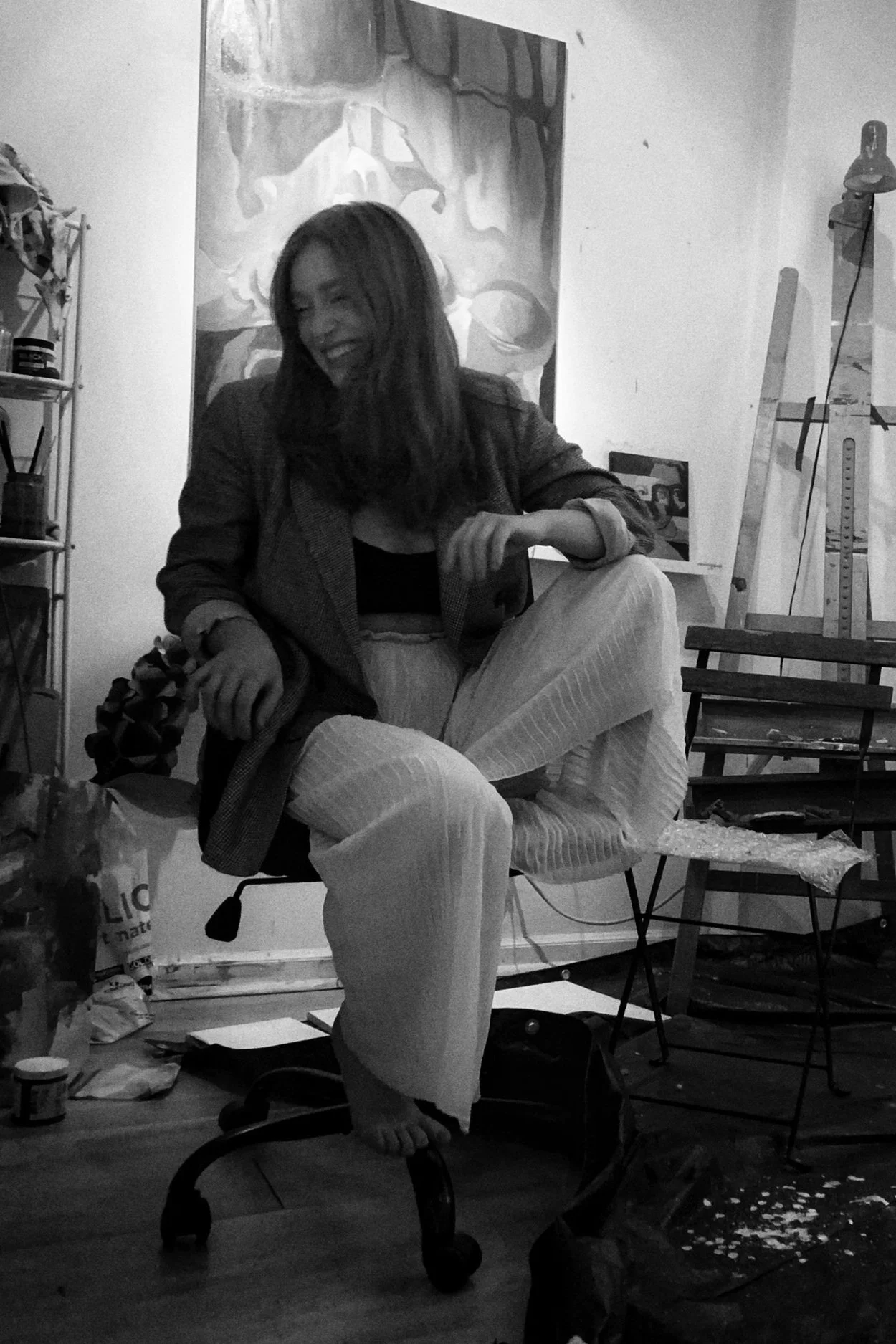
frances elizabeth matassa
artist
I create paintings that result from exploring how a body holds trauma. In my work, acrylic and oil paintings depict figures whose bodies often contort to fit within the canvases. The figures compress as their bodies fold in on themselves, creating stress and weight in certain areas. This compression of the figure expresses deep discomfort within the body. At the same time, highly saturated color palettes create a juxtaposition between content and medium in which bright and vibrant palettes reveal darker content over time. The choice of unnatural colors, rather than flesh tones, also seeks to add further layers of alienation with the body, much like experiencing a dissociated state. Likewise, the figures rarely meet the viewers’ gaze, their vacant eyes staring apathetically into the distance as if lost in thought or memory. The scale of the paintings is directly relatable to the viewer’s own body. This choice in scale helps the viewer place themselves within the spaces these bodies inhabit, inviting reflection on mutually shared experiences. Many of the compositions feature the repeated motif of a figure compressed within enclosing walls. These walls depict the inside of a room while simultaneously referencing the vast outside world by incorporating landscape elements. This context directly relates to the feeling of isolation, both physical and emotional, that resulted from sexual assault trauma. In speaking to friends about their experiences, the shared pervading feelings of dissociation, depersonalization, discomfort, and isolation became apparent. Each composition within this series of paintings develops around those emotions.
My work relates to the politics of the body. Susan Bordo writes of feminism as a way of imagining “the human body as itself a politically inscribed entity... shaped and marked by histories and practices of containment and control.” In my work, the bodies exemplify these histories through their physical confinement and their imposing presence as the site of trauma. Foucault discusses a “disciplinary power” that controls the body through “constant surveillance and examination.” This process of control creates subjected and docile bodies. While the figures in my paintings are subjected and displayed, they project an emotional weight and vulnerability far from docile. By representing my figures in a nonsexualized, non-glorified way, I can reclaim parts of my body rather than viewing them solely as sites of pain and loss. My work pushes toward reversing the deterioration of bodies that have folded in on themselves to take up less space. The work serves as a reminder that the figures are worthy of expanding past the discomfort that contains them.
My grandfather was an abstract painter who taught me how to draw and paint in childhood. His abstract figuration provided a path for me to pursue art without being limited to realism. Many of my paintings begin with the same expressive, sweeping brushstrokes of my grandpa’s style. In the last seven years of painting, I’ve begun using my art to unpack trauma, reclaim my body, and explore different ways to represent the female form from the female gaze perspective.